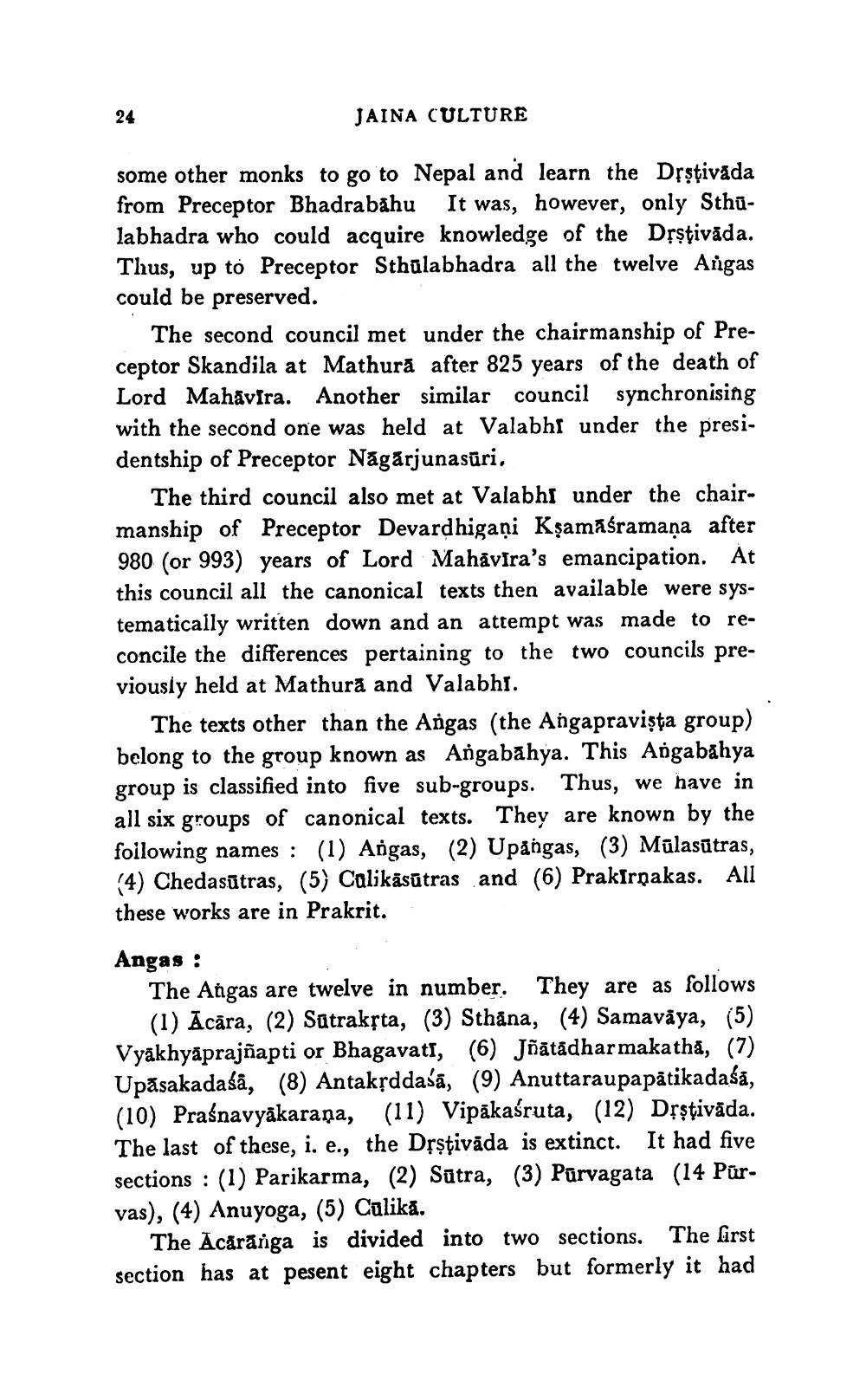________________
JAINA CULTURE
some other monks to go to Nepal and learn the Drşțivada from Preceptor Bhadrabahu It was, however, only Sthūlabhadra who could acquire knowledge of the Dşștivāda. Thus, up to Preceptor Sthūlabhadra all the twelve Angas could be preserved.
The second council met under the chairmanship of Preceptor Skandila at Mathură after 825 years of the death of Lord Mahavira. Another similar council synchronising with the second one was held at Valabhs under the presidentship of Preceptor Nagarjunasūri.
The third council also met at Valabhs under the chairmanship of Preceptor Devardhigaại Kşamāśramaņa after 980 (or 993) years of Lord Mahavira's emancipation. At this council all the canonical texts then available were systematically written down and an attempt was made to reconcile the differences pertaining to the two councils previously held at Mathura and Valabhi.
The texts other than the Angas (the Angapravista group) belong to the group known as Angabahya. This Angabahya group is classified into five sub-groups. Thus, we have in all six groups of canonical texts. They are known by the foilowing names : (1) Angas, (2) Upangas, (3) Mūlasūtras, (4) Chedasūtras, (5) Calikāsūtras and (6) Prakirņakas. All these works are in Prakrit.
Angas :
The Angas are twelve in number. They are as follows
(1) Ācāra, (2) Satraksta, (3) Sthana, (4) Samavaya, (5) Vyākhyāprajñapti or Bhagavat, (6) Jñātadharmakatha, (7) Upāsakadašā, (8) Antakşddaśā, (9) Anuttaraupapātikadaśa, (10) Praśnavyākarana, (11) Vipākaśruta, (12) Dşștivāda. The last of these, i. e., the Drşțivāda is extinct. It had five sections : (1) Parikarma, (2) Sūtra, (3) Pūrvagata (14 Pür. vas), (4) Anuyoga, (5) Culika.
The Acăränga is divided into two sections. The first section has at pesent eight chapters but formerly it had




